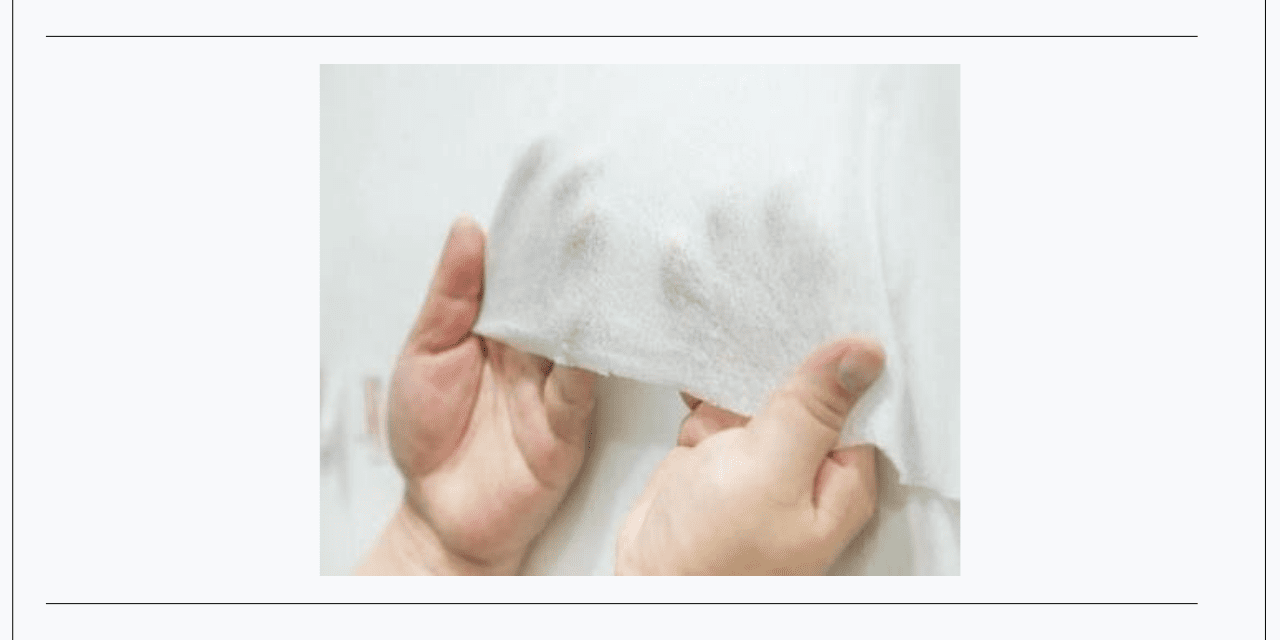Abstract
Cotton fibre is well-known as a primary clothing fabric. Nonwovens have become increasingly relevant in the medical field in recent years. There are, however, some materials that can be reused for a limited amount of time. Cotton improves the functionality and marketability of the nonwovens. The growing nonwovens category would help the cotton industry as well as nonwovens producers who choose to use cotton fibre in their products. Cotton nonwovens are known for their excellent absorption and release properties, as well as their comfort and softness.
Introduction
Cotton fiber is notable as an essential attire material, but its properties make it suitable for nonwovens like diapers, baby towels, feminine grooming, and adult incontinence items. With growing questions about synthetic fibres’ environmental effects, cotton provides a flushable, compostable, and convenient substitute. Cotton’s natural absorbency and hypoallergenic properties make it a practical and convenient choice as well.

For industrial applications, nonwoven fabric and compounded materials are commonly used. Nonwovens are everywhere around us. The structure of knitted fabric is breathable as well as compact. It is used in the design of a mask which is used in our day to day life. Nonwoven fabrics are widely used in furniture and bedding. Nonwovens can be used in the sofa one sits on, the carpet one walks on, and the mattress one sleeps on.
Cotton-based nonwovens manufacturers and brands may be eligible to use the well-known Seal of Cotton trademark for marketing purposes. Consumers recognize the Cotton Seal of Quality at an average of 80% or higher year after year. The Seal also serves as a visual indication that the commodity includes cotton, and customers consistently prefer cotton for personal care items when offered the choice.
Characteristics
Cotton nonwovens have superb absorption and release characteristics, as well as outstanding comfort and softness. To grow cotton nonwoven fabrics with unique beneficial properties, a number of fabric treatment options are possible. This may include the following:
-
- Anti-microbial/Anti-bacterial: An antimicrobial is a substance that destroys or inhibits the development of microorganisms.
- Antistatic: reduces, removes, or prevents static electricity buildup.
- Biodegradable: able to decompose in the presence of bacteria or other living species, preventing contamination.
- Custom Machined Colors: Using pigments instead of dyes to print textiles saves a lot of water.
- Dry Cleaning Resistance: fast to clean.
- Flame Retardant: Self-extinguishing.
- Hydrophilic: Cotton cellulose has what are known as hydrophilic properties in chemistry.
What is it about non-woven cotton that makes it so special?
The cotton industry, as well as nonwovens manufacturers who want to use cotton fibre in their products, will benefit from the growing nonwovens segment. Cotton’s natural structure and characteristics have practical and marketable advantages for residential, institutional, and industrial goods. Cotton fibre is having a positive effect on industries as diverse as consumer goods, hospitals, and automobiles. Cotton, for example, has proven to be a valuable raw material for wipes in the personal care industry because it works better than synthetics and appeals to customers.
Nonwoven Fabrics in consumer products
Have you ever used a dryer sheet to soften your clothes? Nonwoven fabrics are a part of your everyday life. In the consumer goods industry, nonwovens have several benefits. Nonwovens are suitable for tea bags and single-serving coffee bags because they have no odour or taste and are incredibly solid when wet, meaning no tea leaves or coffee grounds can float in your drink.
Dry floor cloths are both practical and efficient. These nonwoven sheets are thick enough to adhere to any surface, trapping dust, dirt, and hair more effectively. You have already used a dryer sheet at least once in your life. These anti-static sheets are constructed of a durable nonwoven cloth that can withstand high dryer temperatures. Dryer sheets may also be made to emit scents and softeners gradually through the drying process.
Other Nonwovens in Consumer Products
- Scouring pads and towels
- Baby bibs
- Cheese wrap
- Coffee and tea bags Filters
- Floor dusting cloths
- Laundry dryer sheets
- Reusable bags
- Cosmetic applicators and removers
- Envelopes, stickers and marks
- Vacuum, laundry, and dress bags
Conclusion
Year after year, consumers remember the Cotton Seal of Quality is higher. A variety of fabric treatment choices are available to produce cotton nonwoven fabrics with specific beneficial properties. Cotton nonwovens are disposable, compostable, and convenient alternatives to synthetic fibres. Nonwovens cotton is a practical and convenient alternative because of its inherent absorbency and hypoallergenic properties.
Reference
- https://www.wptnonwovens.com/blog/nonwoven-cotton-all-natural-nonwoven-fiber/
- https://www.fibre2fashion.com/industry-article/7285/applications-for-nonwovens-in-technical-textiles
- https://www.cottoninc.com/quality-products/nonwovens/why-cotton/
- https://www.wptnonwovens.com/nonwoven-cotton/
- https://www.inda.org/about-nonwovens/nonwoven-markets/consumer-products/
- https://www.cottoninc.com/quality-products/nonwovens/


